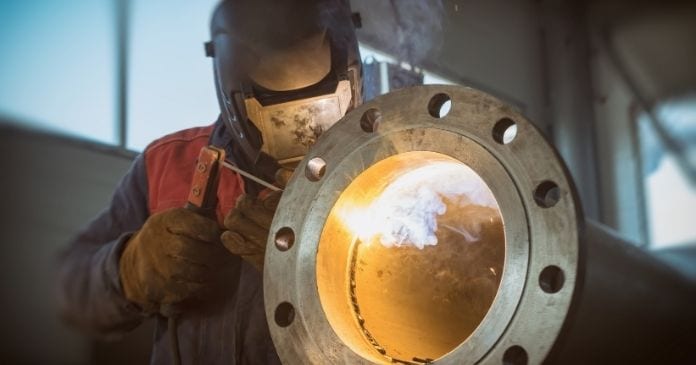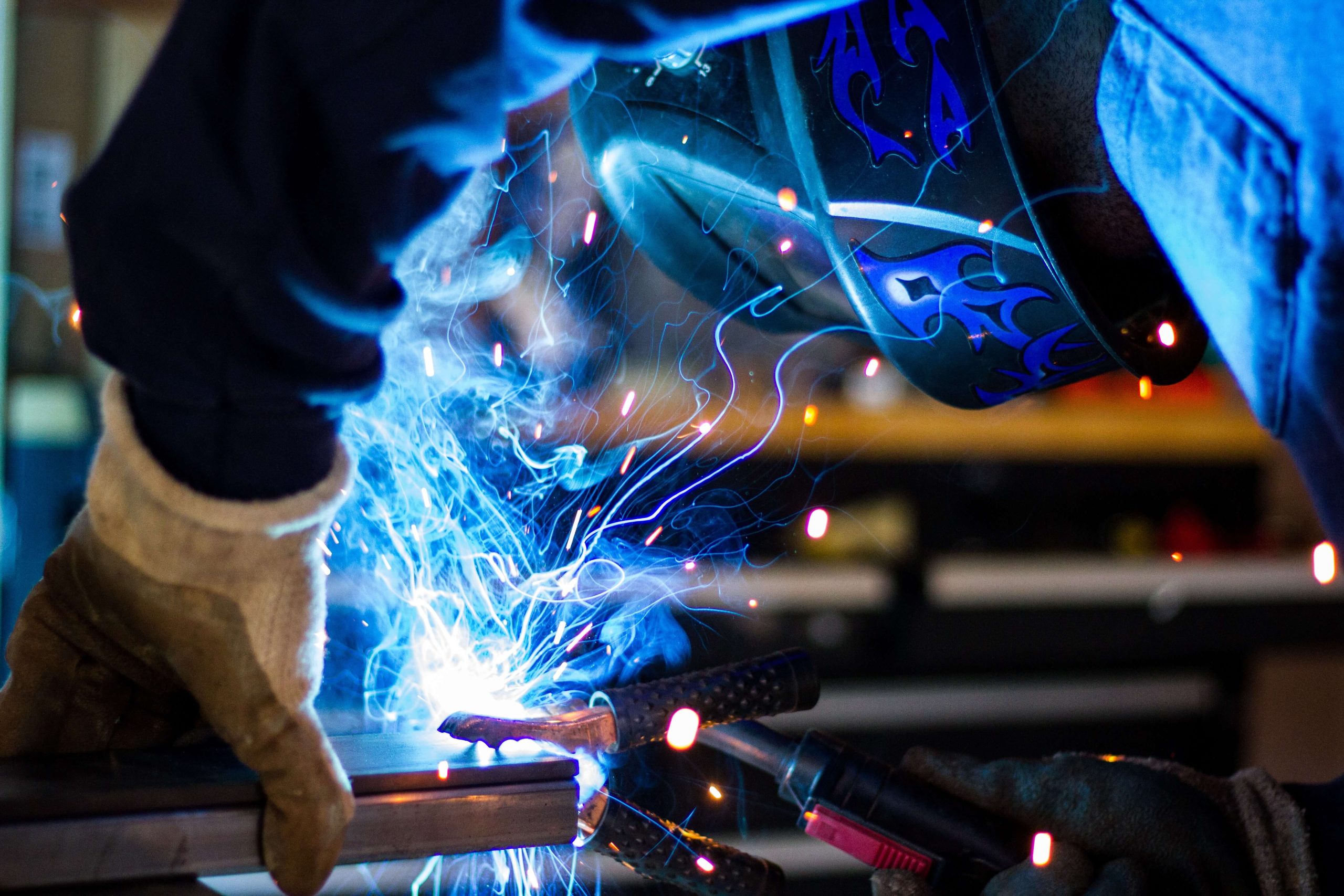Common Welding Repair Issues and Just How to Address Them Effectively
Welding repair work frequently experience an array of issues that can jeopardize the honesty of the last product. Typical problems include insufficient infiltration, porosity, and misalignment, among others. Each problem offers distinct challenges that call for specific techniques for resolution. Understanding these concerns is necessary for welders aiming to improve their results and abilities. This conversation will certainly explore these typical welding fixing issues and effective techniques to resolve them.
Poor Penetration
Insufficient penetration takes place when the weld metal stops working to totally fuse with the base product, resulting in weak joints and possible architectural failings. This problem typically originates from inadequate heat input, inaccurate electrode angle, or improper welding speed. Welders might come across inadequate infiltration as a result of a miscalculation of the needed criteria for a specific product density or type. Additionally, contamination on the base product's surface can prevent reliable bonding, exacerbating the problem. To address insufficient penetration, welders ought to guarantee ideal settings on their equipment and preserve a tidy work surface. Regular inspection of welds is suggested to identify any deficiencies early, enabling timely modifications and the avoidance of jeopardized architectural integrity in bonded settings up.
Porosity
Porosity is an usual flaw in bonded joints that materializes as small gas bubbles trapped within the weld metal. This defect can jeopardize the integrity of the weld, resulting in reduced toughness and potential failure under tension. Belgrade Welding. Porosity commonly arises from contamination, dampness, or incorrect welding methods, which permit gases to run away right into the liquified weld pool. To address porosity, welders must assure appropriate surface area prep work, keep a tidy workplace, and utilize appropriate welding parameters. In addition, picking the best filler product and securing gas can alleviate gas entrapment. Routine evaluation and screening of welds can help determine porosity early, ensuring timely corrective actions are taken, thus maintaining the quality and dependability of the welded framework
Misalignment
Imbalance in welding can emerge from numerous variables, including inappropriate configuration and thermal expansion. Understanding the origin is necessary for reliable resolution. Numerous improvement strategies are available to straighten elements and guarantee architectural honesty.
Reasons for Misalignment
Welding imbalance typically originates from a range of underlying problems that can endanger structural stability. One primary cause is incorrect fit-up of components before welding, which can cause spaces and unequal surfaces. Variants in thermal expansion during the welding procedure can additionally lead to distortion, specifically if the materials being signed up with have various coefficients of expansion. In addition, inadequate securing and fixturing might fall short to hold components securely in position, causing movement throughout welding. Improperly maintained tools, consisting of welding machines and tools, might introduce incongruities in the weld grain, additional adding to imbalance. Driver mistake, stemming from not enough training or experience, can also play a substantial function in creating misaligned welds.

Improvement Strategies Readily Available
Attending to imbalance properly requires a combination of restorative methods tailored to the details problems at hand. One usual approach is the usage of jigs or components to hold elements in the right setting during welding, guaranteeing consistent positioning. Additionally, preheating the materials can help lower distortion and boost fit-up. For considerable misalignment, mechanical adjustment methods, such as making use of hydraulic jacks or clamps, can be utilized to fix the placement before welding. Post-weld warmth treatment may likewise be required to soothe tensions brought on by misalignment. Finally, mindful assessment and adjustment during the arrangement stage can avoid imbalance problems from becoming significant issues, advertising a smoother welding process and enhancing general structural integrity.
Distortion
Distortion is a typical obstacle in welding that can occur from numerous factors, including unequal heating & cooling. Comprehending the reasons for distortion is essential for executing reliable prevention techniques. Addressing this problem not just improves architectural stability but likewise boosts the general high quality of the weld.
Root causes of Distortion
When based on the intense warm of welding, materials commonly undertake changes that can lead to distortion. This phenomenon mostly occurs from thermal growth and tightening during the welding process. As the weld area warms up, the material expands; upon air conditioning, it acquires, which can develop inner stresses. Additionally, unequal heating throughout a work surface can intensify these stress and anxieties, leading to warping or bending. The kind of material also plays a substantial function; metals with varying thermal conductivity and coefficients of expansion might respond in different ways, bring about unpredictable distortions. Inadequate joint design and insufficient fixturing can contribute to imbalance during welding, increasing the probability of distortion. Comprehending these reasons is vital for effective welding repair service and prevention techniques.
Prevention Techniques
Reliable prevention techniques for distortion throughout welding focus on managing warm input and making sure proper joint layout. Keeping a constant warmth input assists to minimize thermal development and contraction, which can cause distortion. Making use of techniques such as preheating the workpiece can likewise decrease the temperature slope, advertising consistent heating. Furthermore, choosing proper joint layouts, such as T-joints or lap joints, can enhance security and lower stress and anxiety concentrations. Applying proper fixturing to protect the workpieces in position better help in maintaining placement during the welding process. Staggered welding sequences can distribute warm a lot more uniformly, avoiding localized distortion. By using these strategies, welders can greatly decrease the possibility of distortion and boost the overall quality of their welds.
Splitting
Splitting is an usual concern run into in welding repair work, commonly arising from various aspects such as incorrect air conditioning prices, product choice, or inadequate joint preparation. The occurrence of splits can substantially endanger the stability of the weld, leading to potential failings during operation. To address this issue, welders must first analyze the origin, making sure that products work and appropriately chosen for the particular application. Furthermore, managing the air conditioning rate during the welding process is crucial; rapid cooling can cause stress and result in cracking. Correct joint style and preparation likewise add to view decreasing the risk. Applying these methods can boost weld quality and longevity, eventually lowering the likelihood of cracking in completed weldments.

Insufficient Fusion
A significant issue in welding repair work is insufficient blend, which why not try here happens when the weld steel does not properly bond with the base product or previous weld passes - Montana Mobile Welding and Repair Belgrade Fabrication. This problem can lead to weaknesses in the joint, potentially jeopardizing the integrity of the welded framework. Elements adding to incomplete fusion include inadequate warm input, incorrect welding strategy, and contamination of the surfaces being signed up with. To address this concern properly, welders must ensure proper pre-weld cleaning and surface prep work, along with readjust their welding parameters to accomplish ample infiltration and blend. Normal assessment throughout the welding process can also help determine incomplete fusion early, permitting timely corrective measures to boost the total high quality of the weld
Overheating
While welding repair work can enhance architectural honesty, overheating presents a considerable challenge that can cause material destruction. Too much warmth during welding can alter the mechanical buildings of steels, leading to reduced strength, enhanced brittleness, and warping. This sensation is especially crucial in high-stress visit this web-site applications where architectural dependability is vital. Identifying getting too hot can involve aesthetic evaluations for staining or distortion, as well as keeping an eye on temperature throughout the welding procedure. To alleviate the threats linked with getting too hot, welders should use proper strategies, such as controlling heat input, changing traveling rate, and utilizing suitable filler products. Furthermore, applying pre- and post-weld warmth treatments can aid bring back product residential or commercial properties and enhance the overall quality of the repair service, making sure long-term efficiency and safety and security.
Regularly Asked Questions
What Are the Typical Signs of a Welding Problem?

Just How Can I Test My Welds for High quality?
To evaluate welds for quality, one can use visual inspections, ultrasonic screening, and radiographic methods. Each method ensures structural stability, identifies defects, and validates adherence to specified criteria, inevitably boosting the reliability of the welded joints.
What Safety Safety Measures Should I Take While Welding?
When welding, one should focus on security by wearing proper personal safety tools, guaranteeing correct air flow, protecting combustible products away, keeping a tidy office, and knowing surroundings to prevent injuries and mishaps.
Can I Fix a Weld Without Redoing the Entire Joint?
Fixing a weld without redesigning the whole joint is feasible, depending upon the damage (Belgrade Fabrication). Strategies such as grinding, including filler product, or making use of a welding procedure can successfully resolve certain flaws while protecting the bordering structure
What Devices Are Essential for Efficient Welding Repairs?
Necessary devices for efficient welding repair work include a welding machine, wire brush, mill, protective gear, clamps, and filler materials. Each tool plays an essential role in guaranteeing top quality and safety and security throughout the repair procedure. Porosity generally develops from contamination, dampness, or improper welding methods, which enable gases to leave into the molten weld pool. Poorly maintained devices, consisting of welding equipments and devices, may introduce incongruities in the weld grain, more adding to imbalance. When subjected to the intense warm of welding, materials frequently undergo modifications that can lead to distortion. Fracturing is a typical issue encountered in welding repairs, often resulting from numerous variables such as inappropriate air conditioning rates, product option, or inadequate joint preparation. A considerable issue in welding repair work is insufficient blend, which occurs when the weld steel does not appropriately bond with the base material or previous weld passes.